BMW iX to be delivered from November
BMW has revealed further details on the market launch of the iX. The electric SUV will begin to roll out deliveries from November. There are also some more details about the technology and a new top model for the series.
It is already known that the Bavarian company will offer the iX in two variants at the market launch. The iX xDrive 40 with 240 kW output will be available in Germany at prices starting at 77,300 euros, the iX xDrive 50 with 385 kW starts at 98,000 euros. In the USA, prices start at $83,200 plus $995 Destination, while the UK prices start at £69,905 OTR. The US market launch will also take place in 2022, unlike the UK’s November launch.
BMW now says that the iX M60 will be added to the model range at a later date. According to current forecasts, the top model will have a system output of up to 440 kW and provide “particularly sporty performance in purely electric driving”. BMW has not yet given any details about the battery of the iX M60.
It is possible that BMW will use the battery from the iX xDrive 50, which has a usable energy content of 105.2 kWh (gross: 111.5 kWh). This should provide the 50 with a range of 630 kilometres according to WLTP. The high-voltage storage system in the 40 has a net capacity of 71 kWh and a gross capacity of 76.6 kWh.
What is interesting about the batteries, is that BMW not only states the maximum charging power (200 kW for the large battery and 150 kW for the small battery) but also publishes detailed charging curves. For example, the charging power of the 105 kWh battery is around 175 kW at a very low charge level, rising to 195 kW up to around 35 per cent State of Charge (SoC). This is followed by a reduction to around 160 kW, which is maintained until around 50 per cent SoC. Subsequently, the charging power drops continuously to just over 90 kW at 80 per cent SoC. Charging from ten to 80 per cent is said to take around 35 minutes, which corresponds to an average charging power of 126 kW. At a low charge level and the highest charge power, it should be possible to charge 150 kilometres worth of electricity in ten minutes.
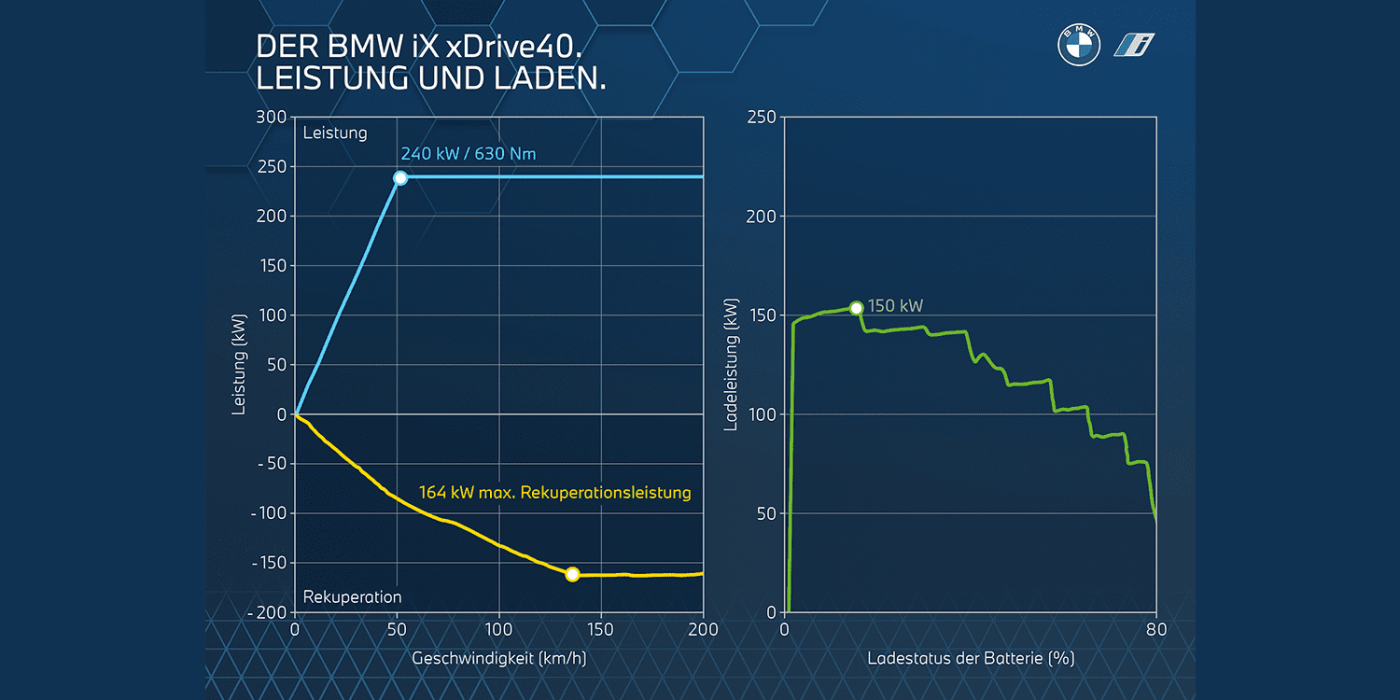
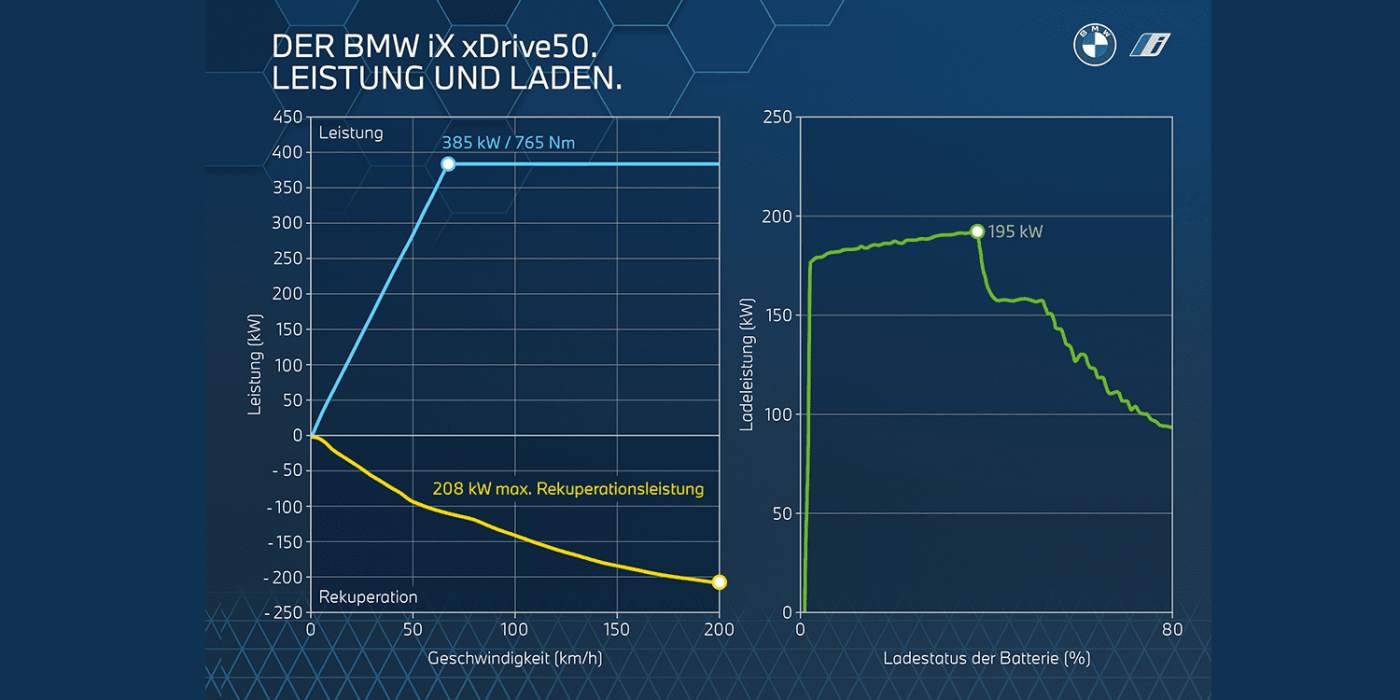
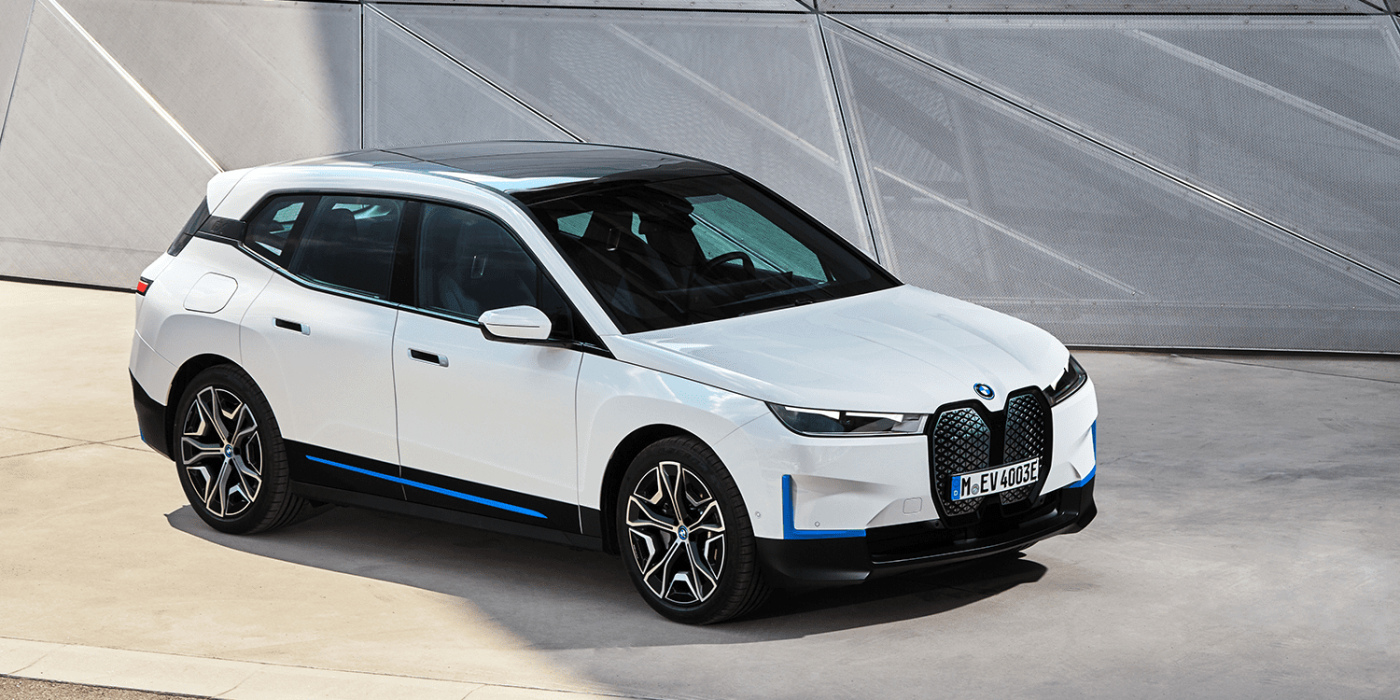
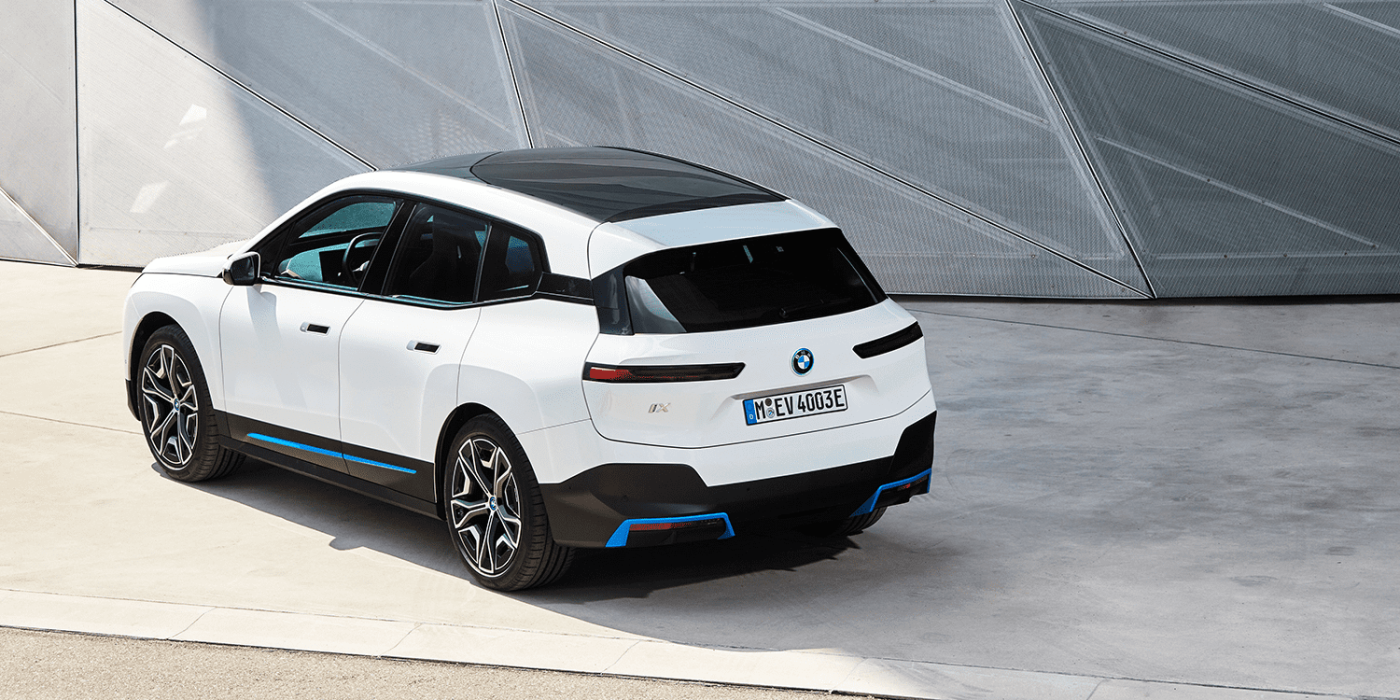
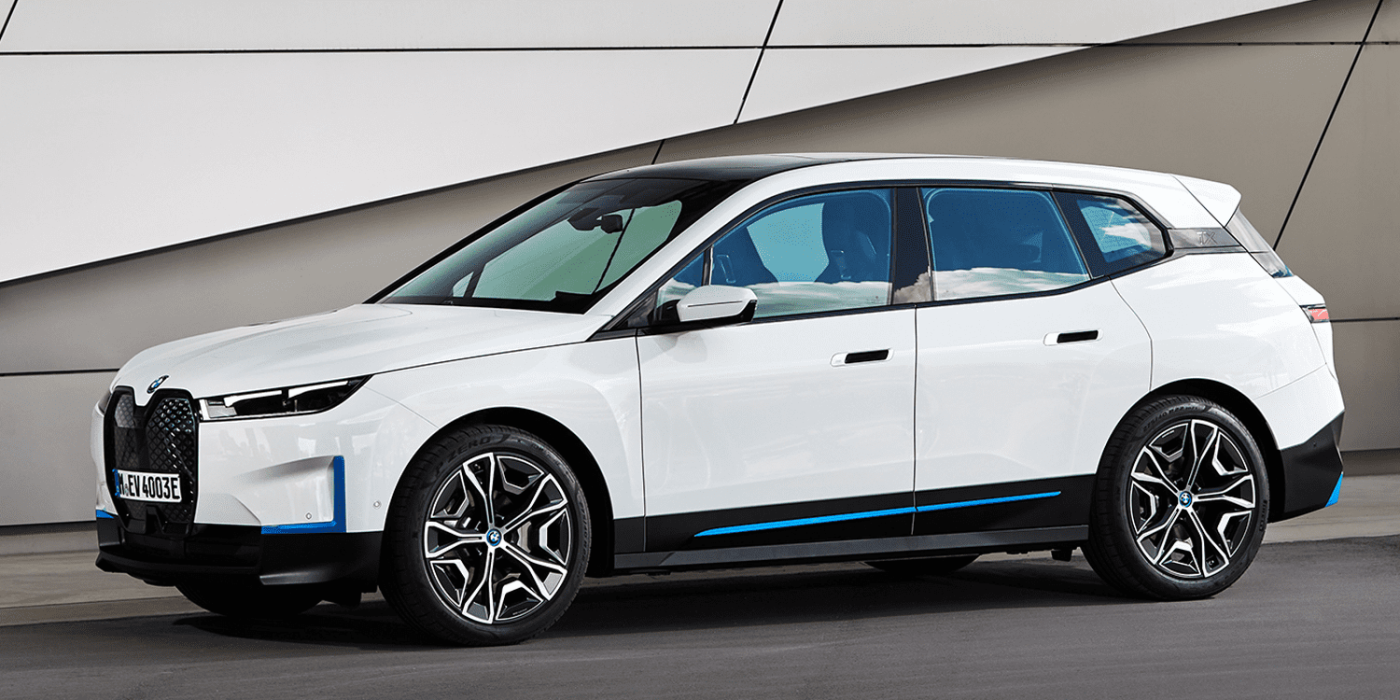
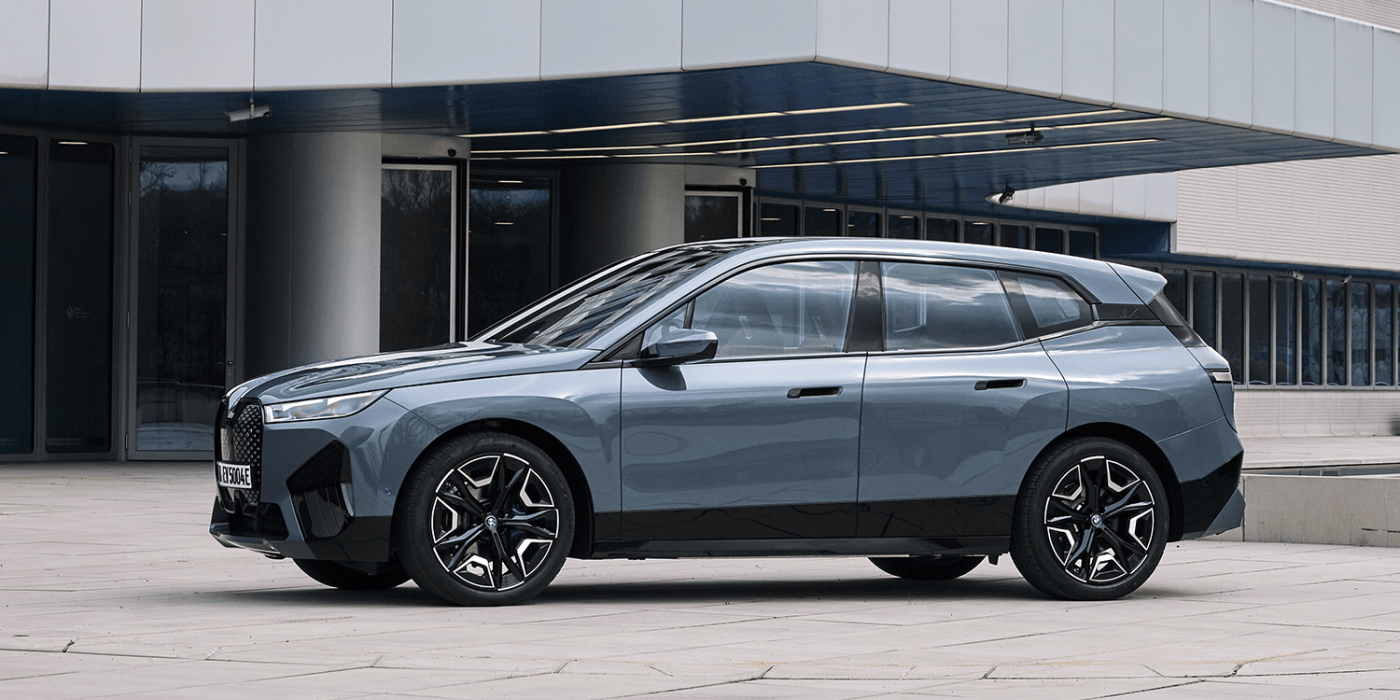
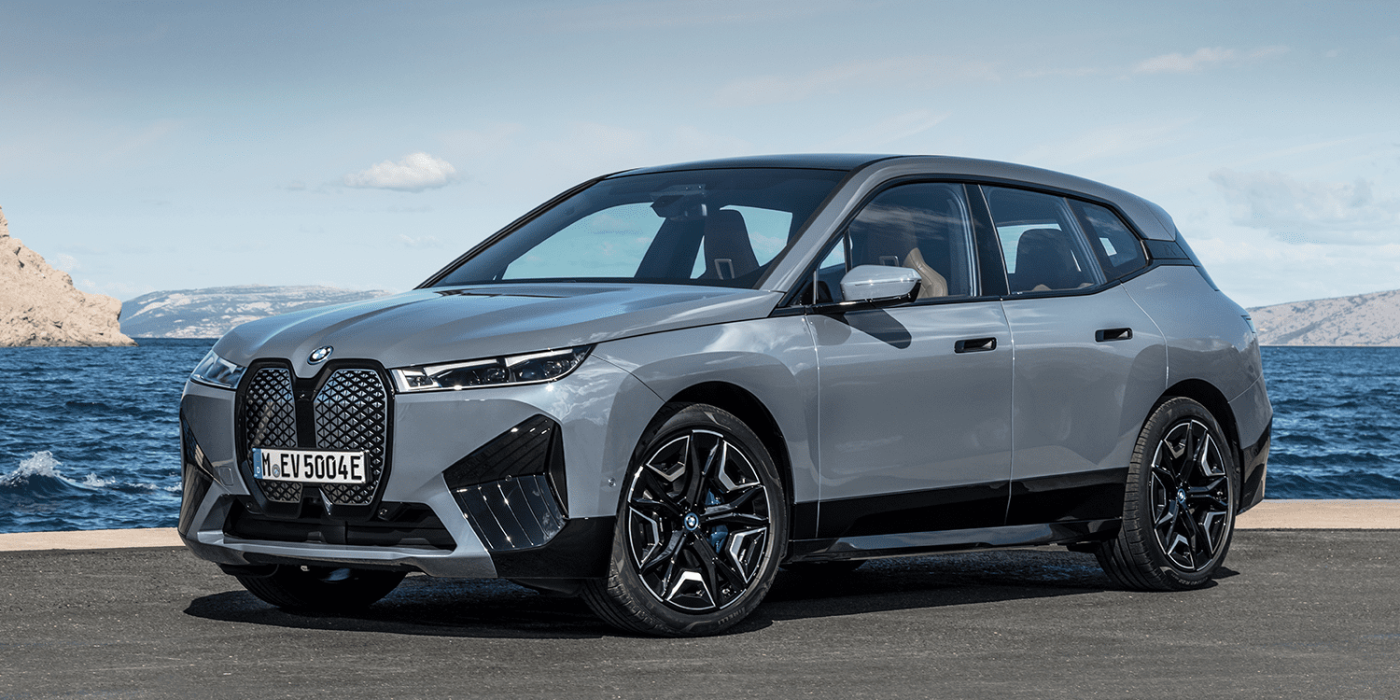
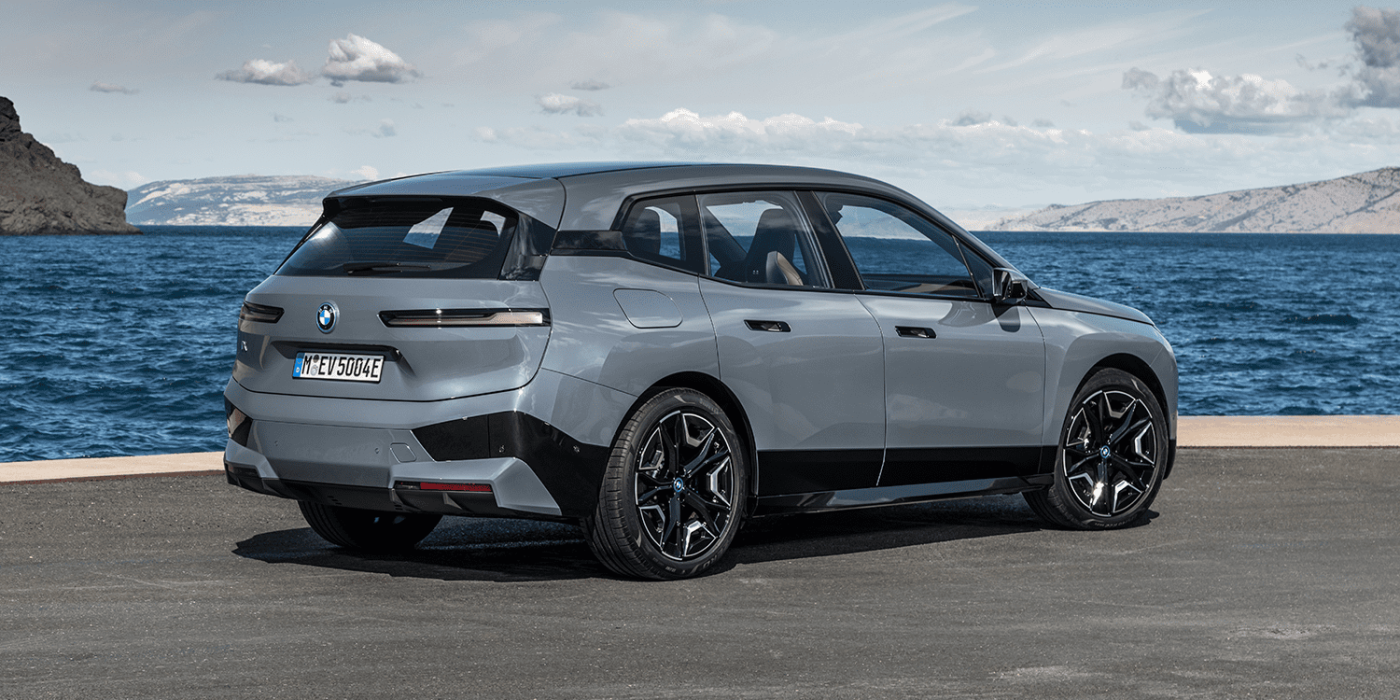
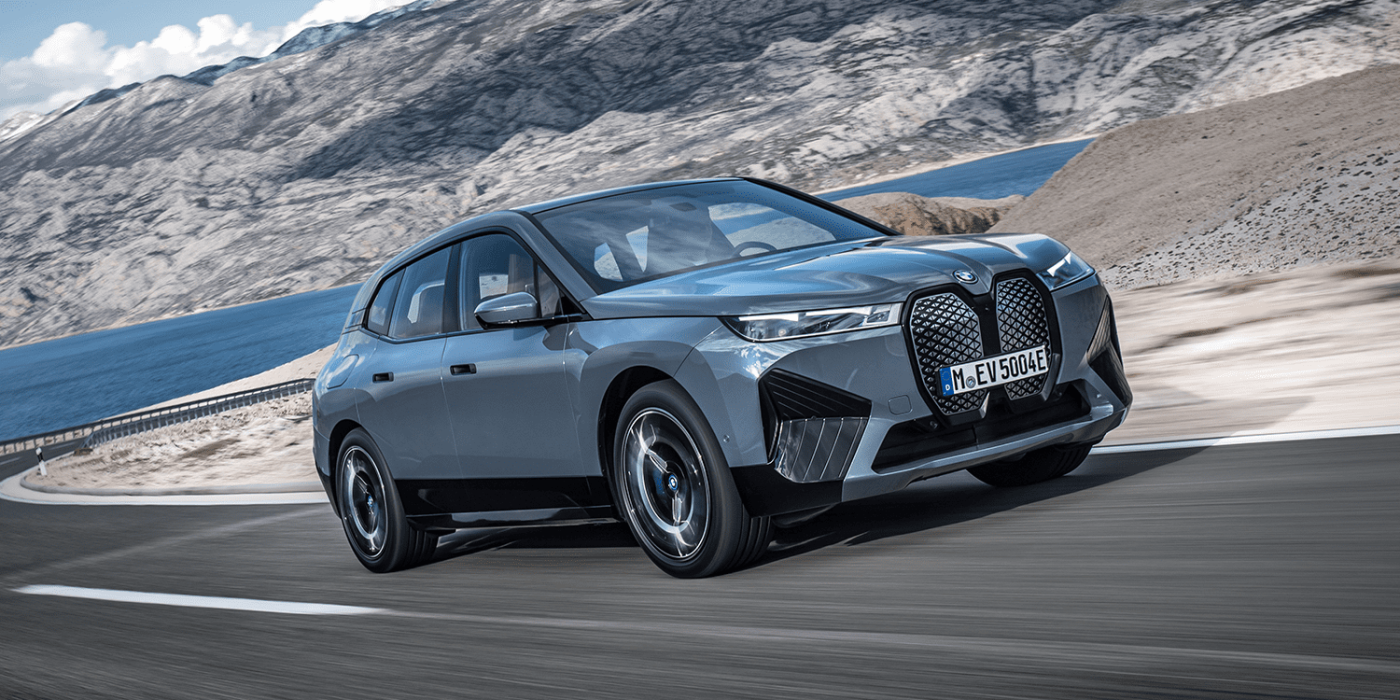
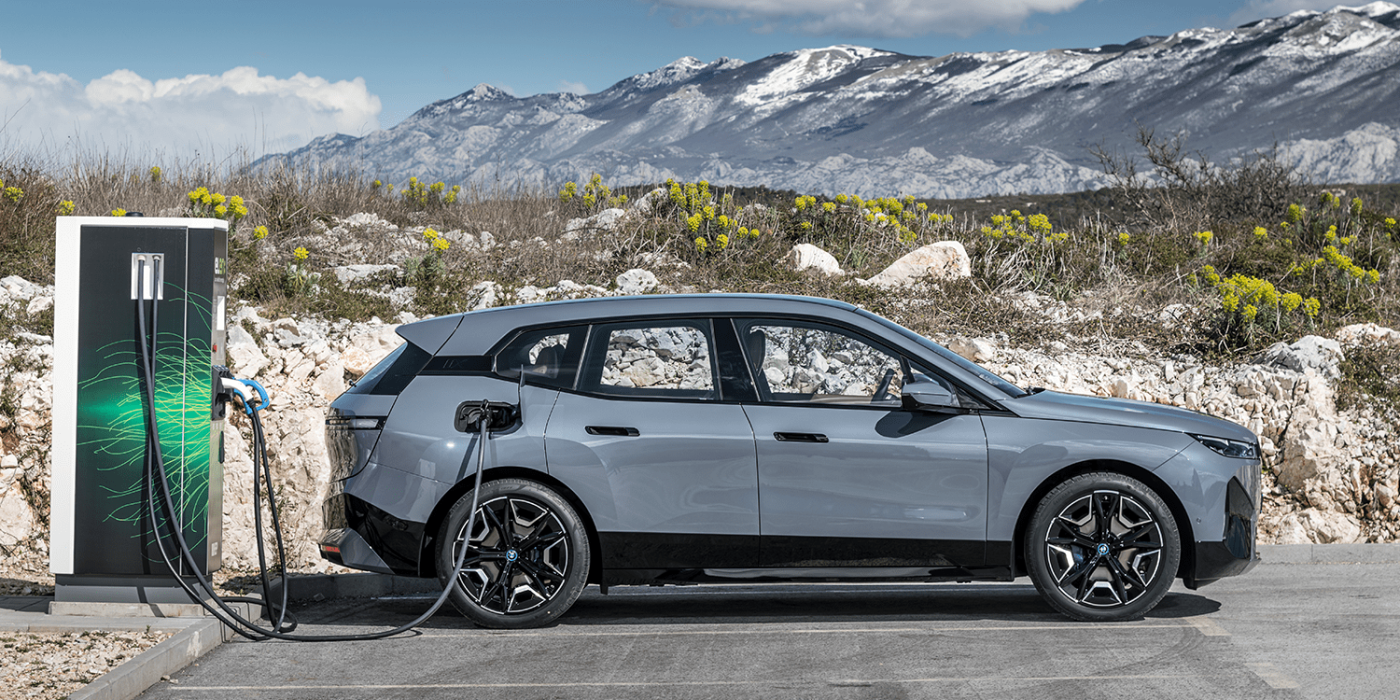
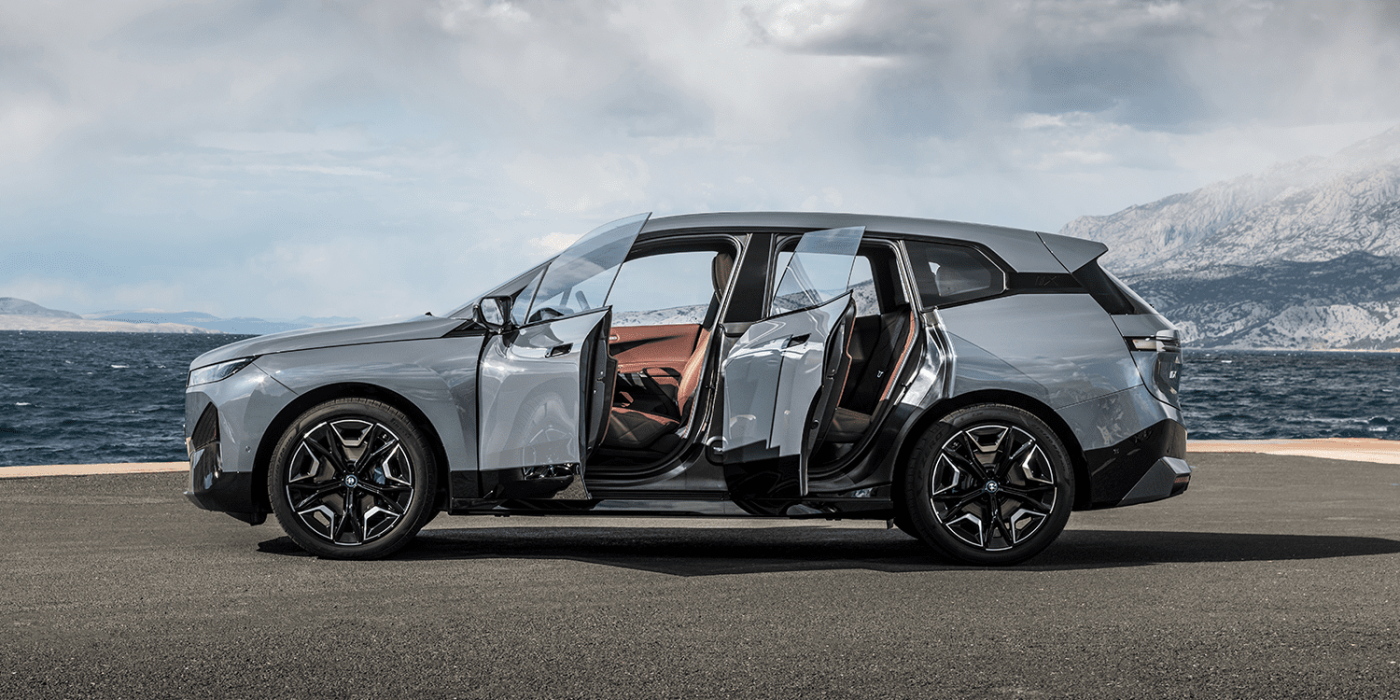
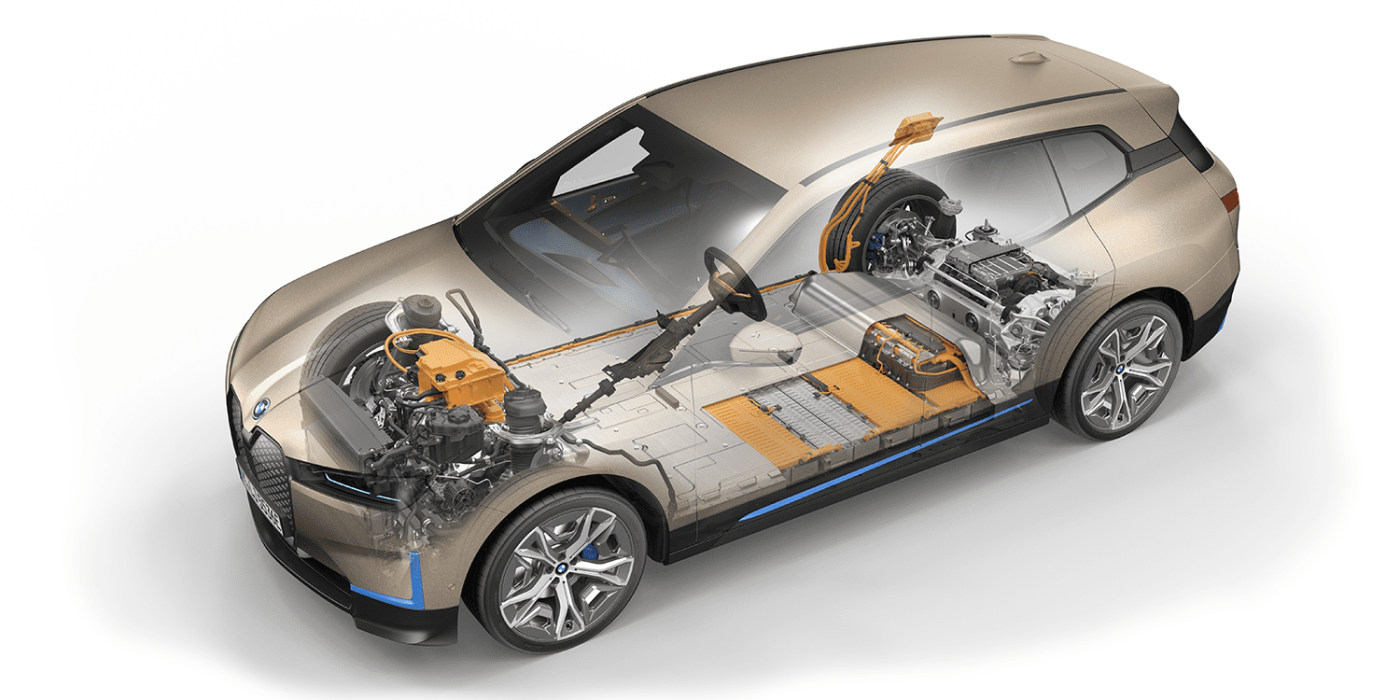
With the 71 kWh battery, the charging curve published by BMW looks somewhat different; the iX cannot reach the extremely long plateau at 150 kW of an Audi e-tron quattro. Only up to about 20 per cent SoC does the BMW stay close to the 150 kW mark, up to about 40 per cent at least in the 140 kW range. After that, the power is reduced in several stages until it falls below 50 kW at 80 per cent SoC. The usual charging window from ten to 80 per cent should be able to be charged in 31 minutes, which corresponds to 96 kW on average.
To increase the efficiency of the drive, BMW has developed adaptive recuperation. BMW describes the system as follows: “The intelligent networking of the drive control system makes it possible to adjust the intensity of the energy recovery in overrun and braking phases to the traffic situation determined with the help of navigation data and the sensors of the driver assistance systems. For example, when approaching a junction, the recuperation power can be increased, thus simultaneously feeding energy into the high-voltage battery and using the deceleration effect. On a free stretch of road, on the other hand, the sailing function can also be activated, with which the BMW iX rolls along without drive torque as soon as the accelerator pedal is released.”
Incidentally, the maximum recuperation power of the iX xDrive 50 is 208 kW, while a maximum of 164 kW is specified for the iX xDrive 40. In drive mode D, adaptive recuperation is activated as standard. In drive mode B, the maximum possible recuperation power for “one-pedal driving” is automatically applied. Those who do not want to use adaptive recuperation can also set high, medium or light energy recovery as standard in the iDrive menu.
The iX’s drivetrain is said to have another distinguishing feature: sound. The “model-specific drive sound” is supposed to contribute to the emotional driving experience with “authentic feedback on load demand and speed”. In addition, further sound variants can be integrated, which were developed by the film music composer Hans Zimmer.
Incidentally, the iX sets a new best value for electric cars in another discipline: The towing capacity is 2,500 kilograms, surpassing the Tesla Model X with 2,250 kilograms. BMW specifies a drawbar load of 100 kilograms, and a further 75 kilograms can be transported in a box on the roof. This increases the cW value from 0.25 with a surface area of 2.82 square metres.
The boot of the 4.95 metre-long SUV holds between 500 and 1,750 litres. Without the payload (max. 645 kilograms), the iX weighs between 2,365 and 2,585 kilograms empty, depending on the battery and equipment. The top speed is electronically limited at 200 km/h.
With reporting by Sebastian Schaal, Germany.
bmwgroup.com (in German)

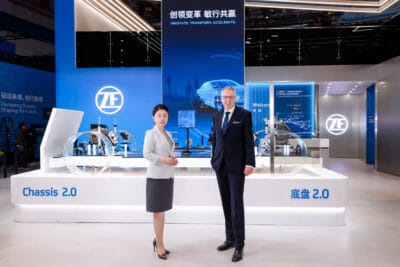
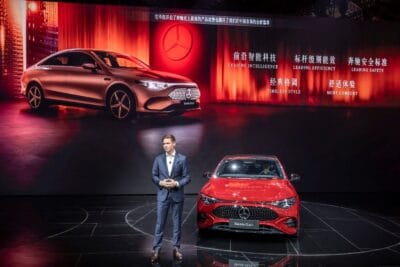
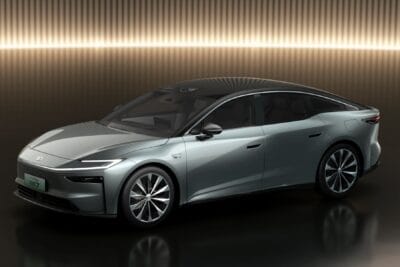
0 Comments